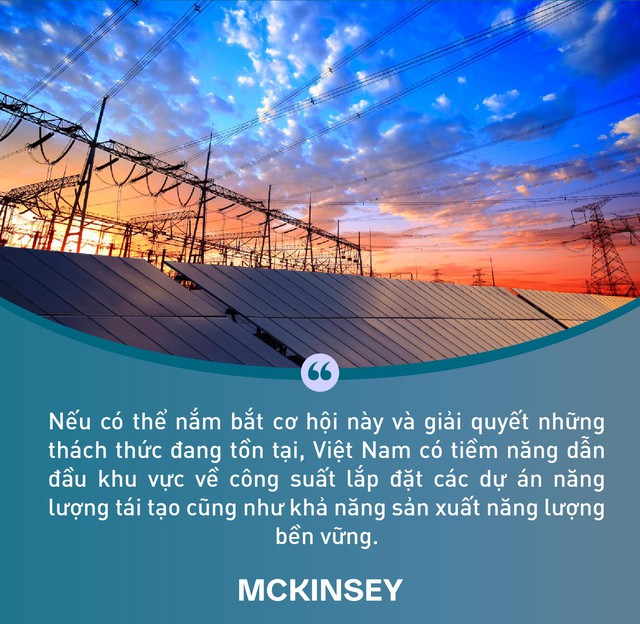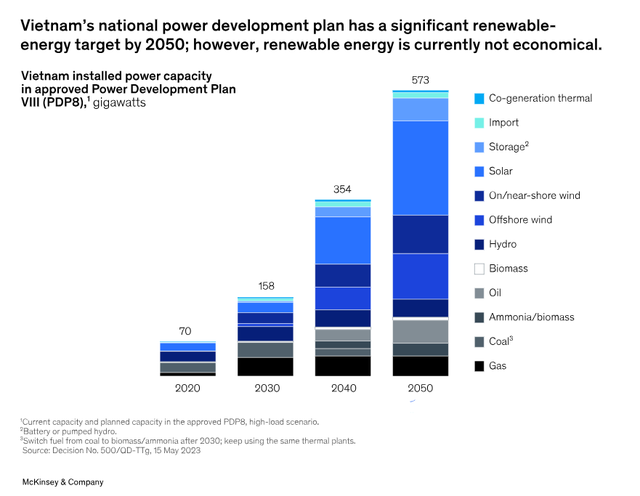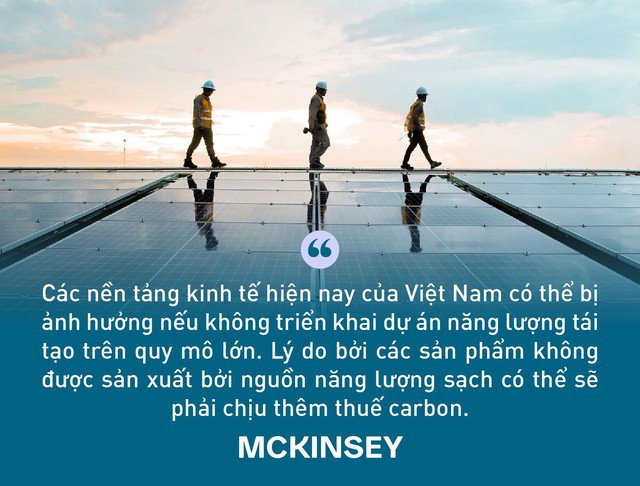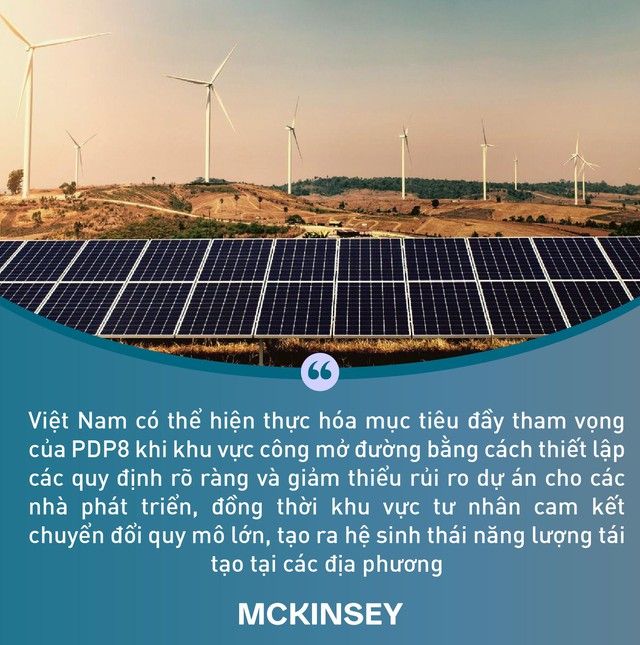Vietnam’s recently approved Energy Plan VIII (PDP8) set ambitious renewable energy targets by 2030. The goals ...
Vietnam’s recently approved Energy Plan VIII (PDP8) set ambitious renewable energy targets by 2030. The goals set out in PDP8 focus primarily on promoting renewable energy while reducing reliance on fossil fuels such as coal. According to McKinsey experts, this puts Vietnam in a dilemma: existing renewable energy projects cannot always be funded due to overlapping regulations.
However, current market conditions offer the Vietnamese energy sector a unique opportunity. Specifically, instead of focusing solely on China, many manufacturers around the world are actively diversifying their supply chains to neighboring countries, including Vietnam. In this context, Vietnam can implement more renewable energy projects to meet the growing demand for renewable energy from commercial and industrial (C&I) customers, as well as to support foreign direct investment (FDI) flows.

According to McKinsey, while Vietnam can seize this opportunity and address existing challenges, it has the potential to dominate the region in terms of installed capacity for renewable energy projects as well as capacity to produce sustainable energy.
As part of the adoption of the PDP8 for renewable energies, Vietnam has committed to achieving net-zero emissions by 2050. To achieve this, Vietnam must rapidly increase the renewable energy mix in order to have a decarbonisation capacity of the electricity sector of about 78%.
Fortunately, the renewable energy potential in Vietnam is immense as it is the most suitable Southeast Asian country to develop wind and solar energy, with a potential capacity of 1,000 gigawatts (GW).
Vietnam has natural resources that offer great potential for wind and solar energy
To seize this opportunity, Vietnam must increase investment, construction and integration of solar and wind energy to enable the country to provide 50 or 100% renewable energy (RE50/RE100) economically efficiently.
 Vietnam’s electricity capacity target in Energy Plan 8 (unit: gigawatts - Gwh). Source: McKinsey
Vietnam’s electricity capacity target in Energy Plan 8 (unit: gigawatts - Gwh). Source: McKinsey
Vietnam’s transition to renewable energy: seizing opportunities for sustainable development leadership
If Vietnam does not switch quickly to renewable energy, it could face the following risks:
Intermittent power outages and risks to energy security
Growing demand for electricity and extreme weather conditions have greatly affected Vietnam. According to McKinsey, renewable energy is an independent source of energy security, independent of imported fossil fuels.
Risk of loss of benefit
Thanks to impressive economic growth and an abundant workforce, many companies have chosen Vietnam as their solution to diversify their supply chains instead of relying on China. However, according to McKinsey experts, Vietnam risks losing this advantage if it does not respond quickly to the growing demand for renewable energy from foreign companies.
Risks related to Vietnam’s current economic context
According to McKinsey, Vietnam’s current economic fundamentals could be affected if renewable energy projects are not implemented on a large scale. Products that are not made from clean energy sources may be subject to additional carbon taxes.

A tangible danger of climate change
Vietnam faces tangible risks due to climate change. In particular, cities are vulnerable to climate change risks. For example, the risk of flooding in Ho Chi Minh City could increase tenfold by 2050. In addition, if the sea level rises by 180 cm, 66% of Ho Chi Minh City could be under water. Climate change risks could leave 40% of the city vulnerable to flooding, resulting in economic and infrastructure losses of up to $15-20 billion.
If Vietnam is not fast, the opportunity will belong to its neighbors
While renewable energy projects in Vietnam are showing signs of delay, neighboring countries are beginning to offer cost-effective solutions for renewable energy projects. India, for example, has set a target of reaching 500 GW of renewable energy capacity by 2030 and has enacted the 2003 Energy Act. As a result, the country paved the way for companies to access open agreements and power purchase agreements (PPPs).

While this journey remains challenging, Vietnam’s urgent need to develop renewable energy sources to meet the ambitious PDP8 targets can be met. This can be achieved when the public sector leads the way by establishing clear regulations and minimizing project risks for developers, while the private sector engages in large-scale transformation with multi-GW projects, creating a local renewable energy ecosystem in Vietnam. and a willingness to use leverage to reduce costs.
Via Cafef